- India
- International
Over the centuries, the many scares over health of US Presidents
As the 2024 Presidential Election looms, concerns over President Biden's health, fueled by memory lapses, grip the nation. A legacy of presidential secrecy, from Garfield's assassination attempt to FDR's paralysis, highlights the lengths leaders go to maintain a facade of strength.
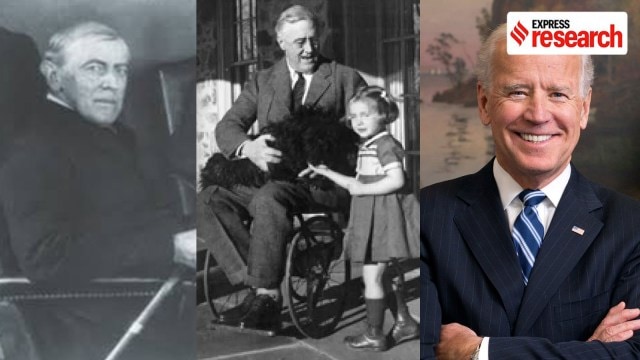 From Woodrow Wilson's stroke to Franklin Roosevelt's paralysis, presidents used to be able to hide the bulk of their illnesses from the US public
From Woodrow Wilson's stroke to Franklin Roosevelt's paralysis, presidents used to be able to hide the bulk of their illnesses from the US public As American voters prepare for the 2024 Presidential Election, a top concern remains the health of incumbent president Joe Biden and former President, and overwhelming favourite for the Republican nomination, Donald Trump. Biden in particular has been the topic of discussion within the US with 76 per cent of voters expressing concern about his age according to a February 2024 NBC poll. These fears were exacerbated by a recent special counsel’s report on Biden’s handling of classified information. The report states that Biden has a “fuzzy” memory, even going as far as to allege that he couldn’t remember defining moments in his life, such as the day his son died and when he served as Vice President.
Biden and his advisors reacted with a vehement denial of these claims, continuing to insist that he is healthy, mentally sharp and fit for office. However, Biden wouldn’t be the first President to lie about his health and due to the storied history that precedes him, there is even a constitutional amendment that allows for his removal.
Pre-Roosevelt
Until 1881, the press rarely discussed the medical condition of American Presidents. The first US President, George Washington, had multiple bouts of illness including malaria, tuberculosis, dysentery, tonsillitis, smallpox and, during the first six months of his administration, a painful boil the size of two fists. In 1824, the public were not informed that presidential candidate William Crawford had suffered a stroke that left him nearly incapacitated. Simply, the American press, and by extension, the public, maintained a policy of don’t ask and don’t tell. Politicians were not subject to scrutiny regarding their health and it was perfectly common practice to withhold medical details from the electorate.
That changed in 1881 when a gunman fired at President James Garfield at Union Station in Washington D.C. For the subsequent three months, public attention was fixated on the White House which updated the press daily on Garfield’s precarious grip on life. At one point, the future inventor of the telephone, Alexander Graham Bell, was called in to use a preliminary metal detector to try and locate the bullet that remained lodged in Garfield’s body. The next day, newspapers published illustrations of Bell standing over a half-naked Garfield. Sales soared and from then on, presidents were subject to constant scrutiny.
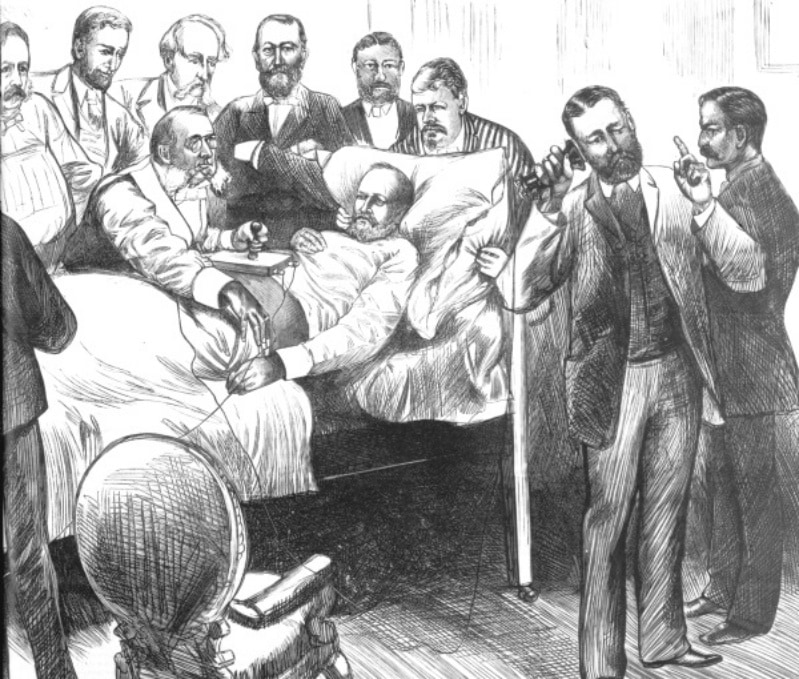 Alexander Graham Bell standing over President James Garfield’s sickbed in 1881 (James Garfield Presidential Library)
Alexander Graham Bell standing over President James Garfield’s sickbed in 1881 (James Garfield Presidential Library)
Garfield eventually succumbed to injuries and was replaced by Chester Arthur. Wanting to project a conflicting image from that of his sickly predecessor, Arthur became the first President to actively lie about his health. Within a year of assuming office, Arthur was diagnosed with Bright’s Disease, a serious disorder of the kidneys. For two years, he was frequently confined to his bed, nearly even dying during an official visit to Florida. However, when asked, Arthur insisted he was perfectly healthy.

In addition to physical ailments, Presidents have also concealed the depths of their mental instability. The unremarkable Presidency of Calvin Coolidge was derailed in 1924, when his son died of an infected blister, contracted while playing tennis on the White House Lawns. According to Coolidge’s biographer, Amity Shales, the president blamed himself for his son’s death and never quite recovered from the tragedy. His behaviour became increasingly erratic and he was prone to fits of rage and detachment. In fact, when asked about the economic crisis preceding the Wall Street crash of 1929, Coolidge admitted to knowing nothing about the proposed legislation combating it, writing later that “when he (his son) went, the power and glory of the presidency went with him.”
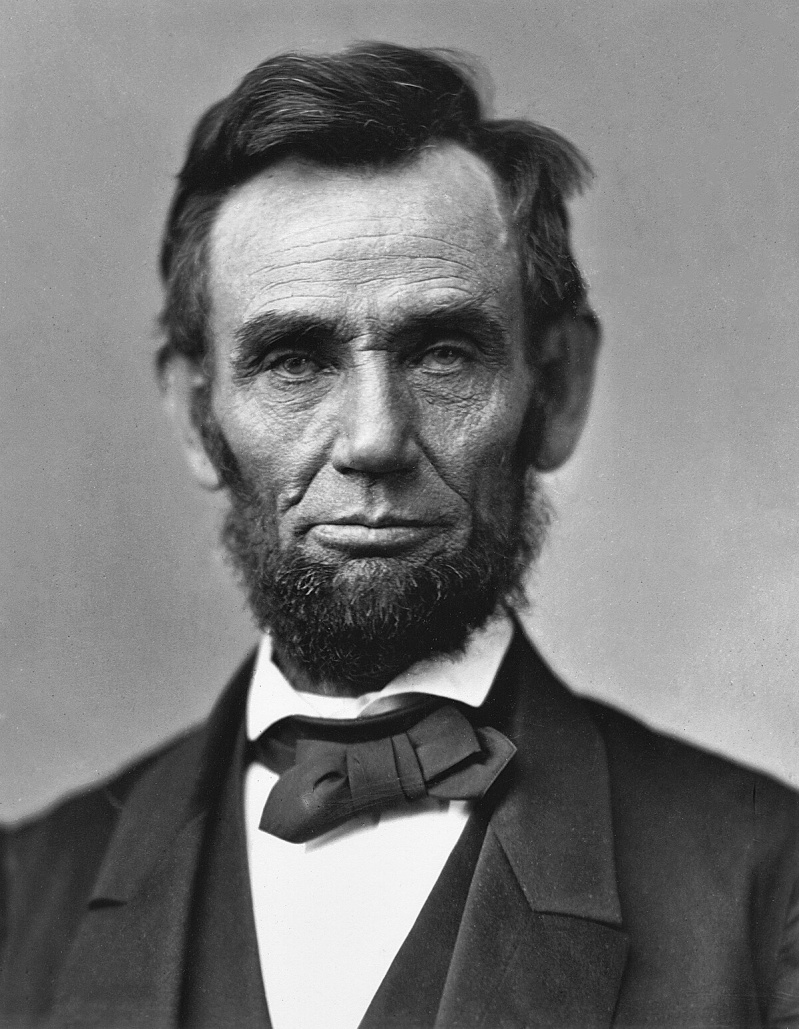 Abraham Lincoln, the President who won the Civil War, was also prone to bouts of melancholy (Wikimedia Commons)
Abraham Lincoln, the President who won the Civil War, was also prone to bouts of melancholy (Wikimedia Commons)
One of America’s most notable presidents was also prone to serious depression, described in his time as bouts of melancholy. Abraham Lincoln, the man who won the Civil War and ended slavery in the United States, was prone to melancholy throughout his life, according to biographer David Herbert Donald. So serious was Lincoln’s mental state that a friend was once compelled to hide all the knives and razors in his house to keep him on suicide watch. After suffering a military defeat during the Second Battle of Bull Run in 1862, the president, who had recently lost his 11-year old son, told his cabinet that he was ready to hang himself. While the public saw Lincoln as a behemoth holding the country together, inside, he was secretly falling apart.
While Lincoln persevered and went on to have a notable presidency despite his health problems, President Woodrow Wilson’s health arguably had disastrous implications for America in the aftermath of the First World War. On the evening of April 3, 1919, while in Paris for the treaty negotiations following the war, Wilson fell violently ill. In the days prior, he had argued repeatedly with the French Prime Minister, Georges Clemenceau, and the British Prime Minister, David Lloyd George, about the price Germany should pay in reparations for escalating the conflict. Wilson was a staunch advocate of establishing an international world order and believed that to do so, the victors ought to be lenient towards Germany.
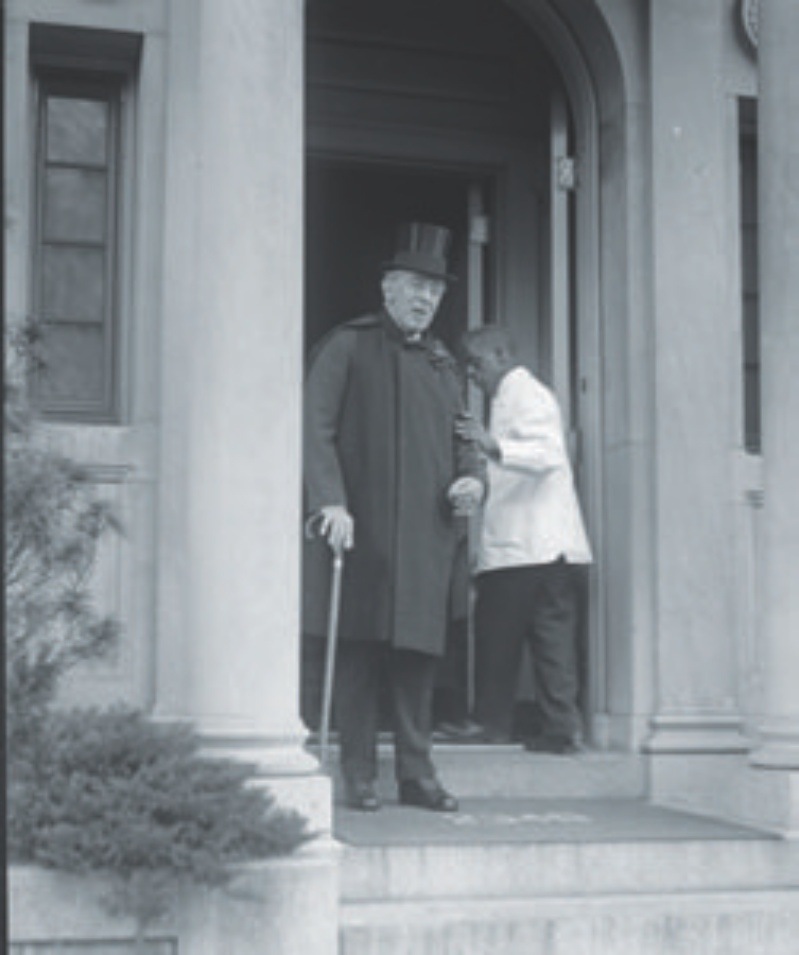 Woodrow Wilson was left incapacitated by a stroke (Wikimedia Commons)
Woodrow Wilson was left incapacitated by a stroke (Wikimedia Commons)
While Wilson had the upper hand in the negotiations, soon after contracting his illness, he began to exhibit strange behaviour. According to letters written by his chief usher, Irwin Hoover, there was “something queer” happening in the President’s mind as he routinely became obsessed with “funny things.” Weeks later, Wilson gave up many of his demands, accepting the French call for reparations and occupation of the German Rhineland. Margaret MacMillan, author of Paris 1919, would go on to claim that an “exhausted” Wilson abandoned his ideals, presenting Clemenceau suddenly with “the best possible deal for France.” The subsequent Treaty of Versailles proved to be so harsh that it became a rallying cry for German nationalism and eventually, a cause célèbre for Adolf Hitler.
Wilson’s staff convinced the American public that the president was merely suffering from a bout of influenza and given the limited communications at that time, few were aware of the concessions he had made towards France and England. The sickness would continue to plague Wilson who suffered a severe stroke only six months later. For the remaining 17 months of his tenure, Wilson was all but incapacitated with all communications going through his wife Edith. So profound was the influence of Edith on her sickly husband that historians have since referred to her as the first female President of the United States.
Decades later, Wilson’s successor Franklin Delano Roosevelt (FDR,) would face another global war. Like Wilson, he too kept his health challenges away from the public spotlight, arguably to the detriment of national interest.
Roosevelt – master of disguise
In 1945, the United States was finally at ease. The end of the Second World War was within its sights as the Allied invasion penetrated the heart of Europe and the Germans were all but vanquished. However, in April of that year, the sitting president suddenly died in Warm Springs, Georgia. The news of Roosevelt’s death shocked the world. The American public were devastated – they had just re-elected Roosevelt to an unprecedented fourth term and imagined their leader to be a bastion of strength, a pillar that led the country through the most devastating war known to history. No autopsy was performed on FDR so his cause of death was uncertain, but following his passing, Roosevelt’s personal physician, Vice Admiral Ross T. McIntire, stated on many occasions that prior to his “unexpected death, the president was a picture of health”.
In reality, Roosevelt had been sick for the last five years of his presidency. With the help of McIntire and other advisors, Roosevelt was able to deceive the American public into believing he was fit for the presidency, even embarking on an election campaign in 1944 despite knowing the seriousness of his illnesses. Harry Truman, his Vice President, would go on to succeed Roosevelt upon his death but himself was unaware of the seriousness of the president’s health challenges.
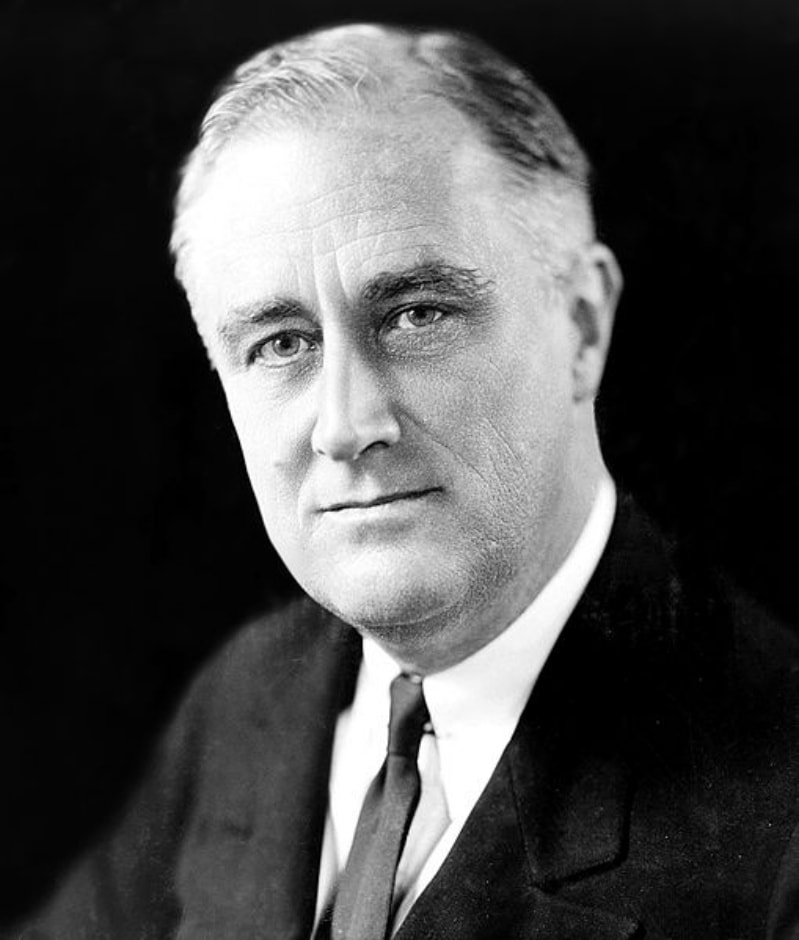 Roosevelt in 1937 (Franklin Roosevelt Presidential Archives)
Roosevelt in 1937 (Franklin Roosevelt Presidential Archives)
Roosevelt’s deception had begun many years prior to assuming the presidency. In his capacity as Assistant Secretary in the Navy, he had made several trips to the White House during the Wilson administration, witnessing, the implications of Wilson’s stroke on his presidency. After one visit, Roosevelt even wrote to one of his aides describing the extent of Wilson’s paralysis, remarking that “his utter weakness was startling.” However, instead of learning from these experiences, Roosevelt was inspired by them and would go on to use similar techniques to conceal his own disabilities from the public.
In 1921, the same year that Wilson vacated the presidency, Roosevelt was diagnosed with an acute case of polio that would leave him paralysed for the rest of his life. Although he temporarily left American politics following the diagnosis, by 1931 he was back into the fray and was the overwhelming favourite to represent the Democratic party in the upcoming election. While his detractors, such as Republican politician Jesse Nicholson, frequently alluded to his physical incapacity, Roosevelt never directly addressed the rumours.
In fact, he went to great lengths to hide his disability from the public. When he spoke with political officials domestically and abroad, he would be seated in a normal chair instead of a wheelchair. If photographers captured him in a wheelchair, their footage would be destroyed and the camera confiscated. To avoid the public seeing him unable to walk, Roosevelt would arrive hours early to speeches and appearances, standing at the podium well before any crowds had gathered. Demonstrating the depth of the ruse, of the 35,000 pictures of the president at the Franklin D. Roosevelt library, only two show him in a wheelchair.
FDR was an immensely popular candidate and later president. Had he stepped down from office after the completion of two terms, his illnesses might not have factored into his presidency at all. During his first seven years in office there was not much to conceal apart from his paralysis. However, by 1938, serious concerns about his health began to emerge within his inner circle. In 1941, Roosevelt gave a speech in Virginia that the New York Times wrote had “moved the crowd as few recent Presidential speeches have.” While he appeared fit to the general public, behind the scenes, his advisors stated in letters of correspondence, that the President looked “as bad as a man can look.” His physician, McIntire, sent his blood work to be tested under a pseudonym- “F. David Rolph ” – one of Roosevelt’s nearly two dozen aliases. According to letters written by his daughter Anne, Roosevelt was on the brink of medical calamity but the White House, in an official press release, declared that there was “nothing serious” going on. That would not be the last time the administration tricked the public.
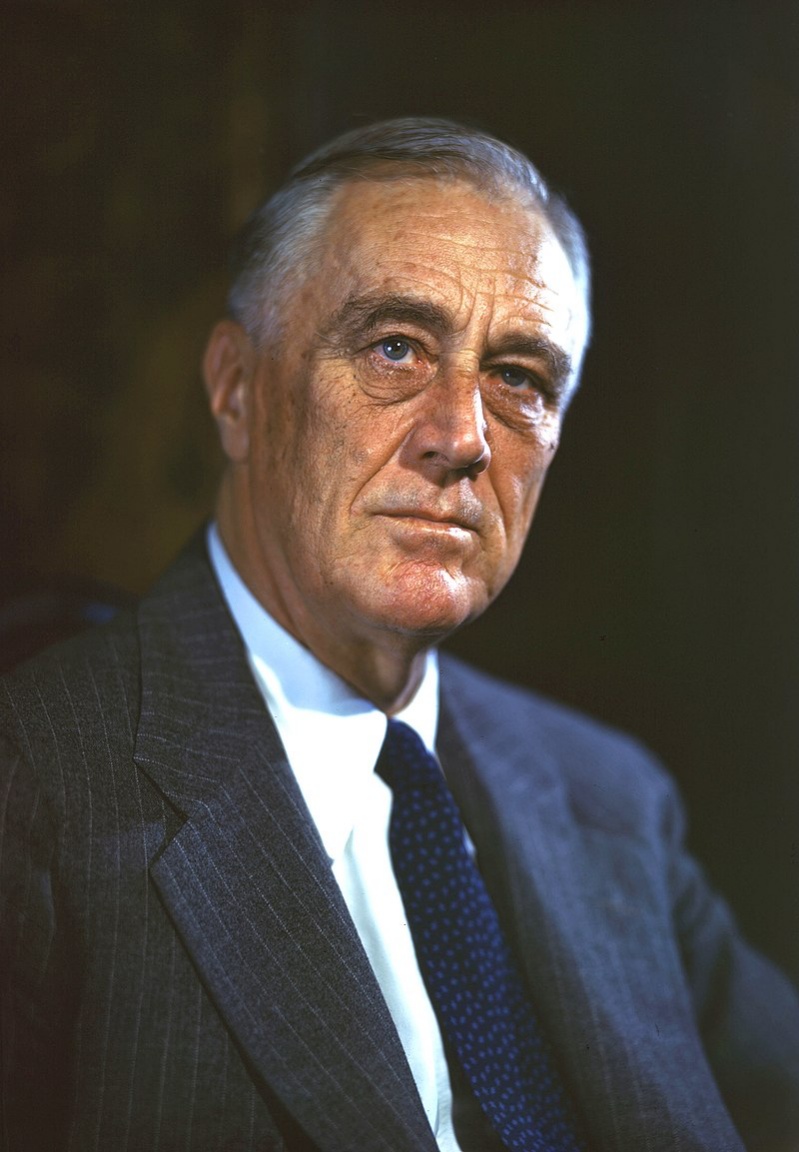 Roosevelt in 1944 (Wikimedia Commons)
Roosevelt in 1944 (Wikimedia Commons)
In 1944, Roosevelt was campaigning for his fourth term in office, amid the Second World War. Unlike in previous elections, he opted against embarking on the campaign trail, citing his obligations in Europe as the reason. In reality, Roosevelt was practically bedridden by this point, suffering from chronic bouts of unbearable pain caused by bowel cancer. The next year, Roosevelt met with the other allied leaders, Winston Churchill and Joseph Stalin, at a conference in Yalta. The meeting was intended for the ‘big three’ to address several issues pertaining to the war and the formation of the United Nations. Roosevelt was so ill during this time that he was dubbed “the sick old man of Yalta,” with Churchill even remarking that his counterpart seemed to “no longer take an intelligent interest in the war.”
Roosevelt’s health progressively deteriorated from there and his death came as little surprise to those who knew him. McIntire, however, insisted that the president had been completely fine. While Roosevelt’s team had managed to conceal his illnesses while he was alive, following his death, the decision to forgo an autopsy would raise public suspicion. Walter Lippman, one of America’s most famous political columnists, wrote of the Vice President Harry Truman, that “Truman was nominated at Chicago last July by a convention which was fully aware that it was almost certainly choosing a President of the United States. There was no secret about this during the campaign.”
Truman, despite Lippman’s assessment, was left woefully out of the loop as Vice President, remaining unaware of Roosevelt’s strategy in Europe, and even his decision to attend the Yalta conference. Roosevelt’s death, his apparent illnesses during the presidency, and his failure to prepare Truman caused concern within Congress, who later decided that the country needed a better system to determine competency for office. However, despite agreeing that no President should be able to conceal such an important secret from the public, it was only in 1967 that the Twenty-Fifth Amendment was passed and ratified, which provided for the first time, what would happen if the current president was no longer able to lead.
25th amendment
The 25th Amendment to the United States Constitution is a crucial piece of legislation that outlines the procedures for the transfer of power in the event of a president’s inability to fulfill their duties. Specifically, Section 4 of the 25th Amendment provides a mechanism for the vice president and a majority of sitting Cabinet secretaries to declare the president “unable to discharge the powers and duties of his office.” This declaration must be put in writing and sent to the Speaker of the House and the Senate’s president pro tempore. Upon receipt of this declaration, the vice president is to immediately assume the role of “acting president” and take over all the president’s powers.
The 25th Amendment’s Section 4 has never been invoked in reality, but it remains a critical aspect of the Constitution. It is designed to address situations where the president’s physical or mental health is in question, and the president is either unwilling or unable to confront their disability. This provision could apply to a president who is disabled but refuses to step aside, whether due to stubbornness, influence from a powerful staff, or a strong-willed spouse.
The topic of invoking Section 4 of the 25th Amendment has surfaced in various administrations, including during President Ronald Reagan’s second term. In 1987, White House aide Jim Cannon expressed concerns about Reagan’s behavior and urged White House Chief of Staff Howard Baker to consider the possibility of applying the 25th Amendment. However, this did not come to fruition, and Reagan remained in office until the end of his term.
In more recent times, the discussion around the 25th Amendment has been linked to President Donald Trump. In February 2019, Michael Cohen, Trump’s former personal attorney, testified before the House Oversight Committee, describing Trump’s behaviour as that of a mafia boss and outlining various unethical actions he was instructed to carry out. Cohen’s testimony, along with reports of discussions among federal Executive Branch officials about invoking the 25th Amendment, led to public debate about the amendment’s applicability.
In an interview with political commentator Tucker Carlson in 2022, Harvard Law Professor Emeritus Alan Dershowitz criticised the idea of using the 25th Amendment to remove Trump from office, arguing that it is only applicable in cases of incapacitation. Dershowitz’s comments were echoed by Trump himself, who characterised any attempt to use the 25th Amendment as a “despicable act of unconstitutional power grabbing.”
Despite the controversy surrounding the 25th Amendment, it remains a vital tool for addressing situations where a president is unable to fulfill their duties. While it has never been invoked in reality, its existence serves as a safeguard against potential abuses of power and ensures that the country can continue to function effectively in the face of unforeseen circumstances.
Apr 05: Latest News
- 01
- 02
- 03
- 04
- 05








































